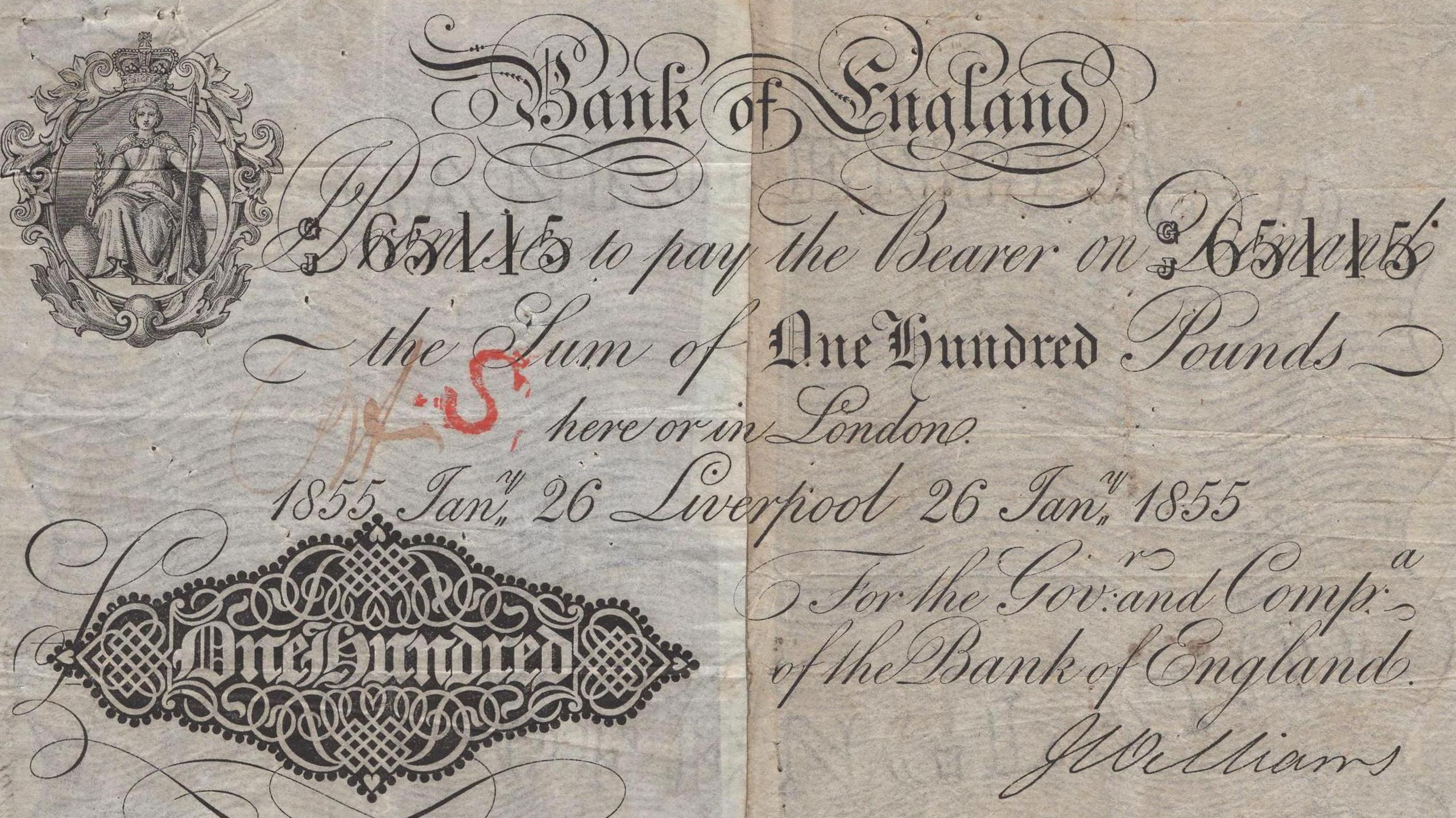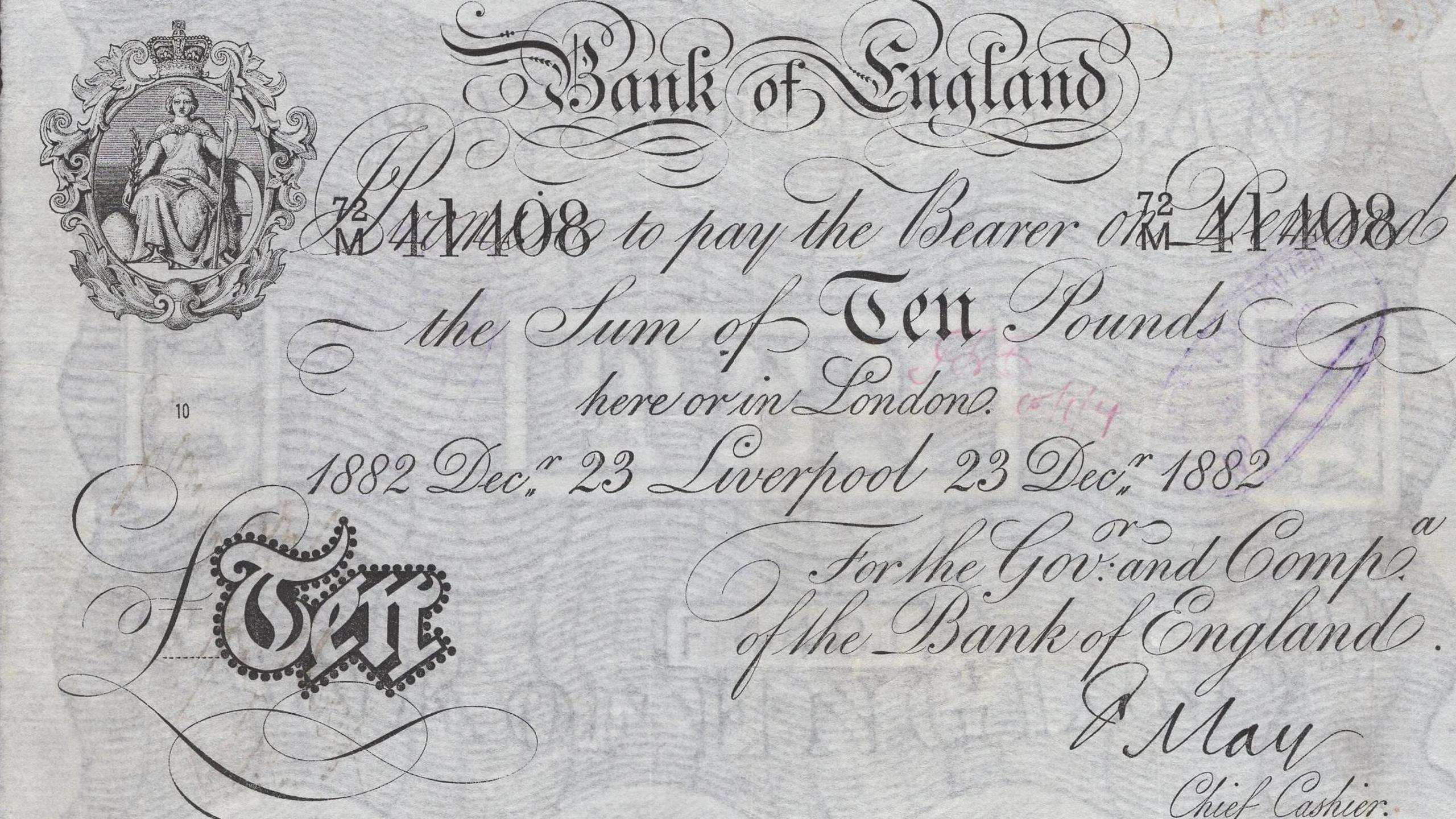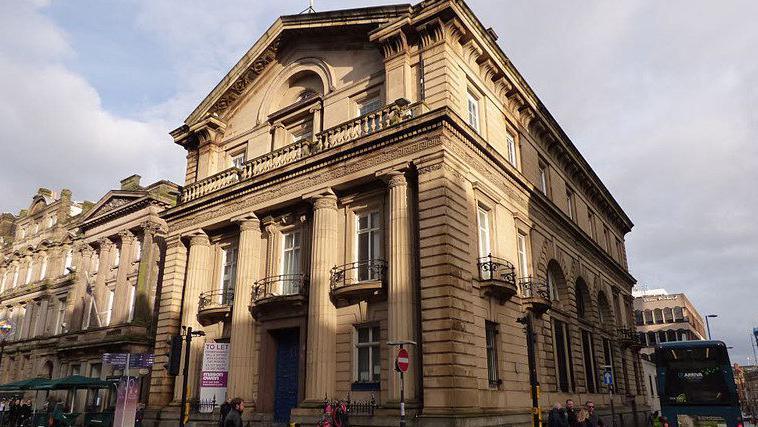Rare £100 banknote fetches £32,000 at auction

The original 1855 note was delivered in two halves then taped back together at its destination, for security purposes
- Published
A rare £100 banknote from 1855, which was worth such an enormous sum at the time it had to be cut in half for safe delivery, has fetched £32,000 at auction.
The note, issued by the Liverpool branch of the Bank of England 169 years ago, was worth approximately £15,000 in today's money on the date it was issued.
Another rare note, a £10 bill from 1882 signed by the disgraced chief cashier Frank May, also "comfortably exceeded" its estimate, selling for a hammer price of £26,000.
Andrew Pattison, of auctioneers Noonans, said the notes were bought by "pre-eminent collectors of British banknotes", adding "the market for such rare items is going from strength to strength".

The £10 note was signed by former chief cashier Frank May, who later had to resign after a series of irregular loans
May was forced out of his post as chief cashier in disgrace, after it became apparent he had made a number of irregular loans and overdrafts to clients.
He was also found to have got himself into financial trouble on the stock market.
The Bank of England's Liverpool branch first opened in Castle Street, in the city centre, in 1826. It was rebuilt between 1845-48 in the neoclassical style.
The Grade-I listed building was last used by the Bank of England in 1987 and has been empty since the 1990s.
In 2015 it was occupied by the anti-capitalist group the Love Activists, as part of a protest against homelessness.
There are currently plans to turn the vacant building into a restaurant.

The former Liverpool branch of the Bank of England is set to become a restaurant
Related stories
Rare 1855 banknote could sell for £20k at auction
- Published13 June 2024
Historic building set to become Ivy restaurant
- Published3 May 2024
Fences erected around protest bank
- Published1 May 2015
Related links
Listen to the best of BBC Radio Merseyside on Sounds and follow BBC Merseyside on Facebook, external, X, external, and Instagram, external. You can also send story ideas to northwest.newsonline@bbc.co.uk, external